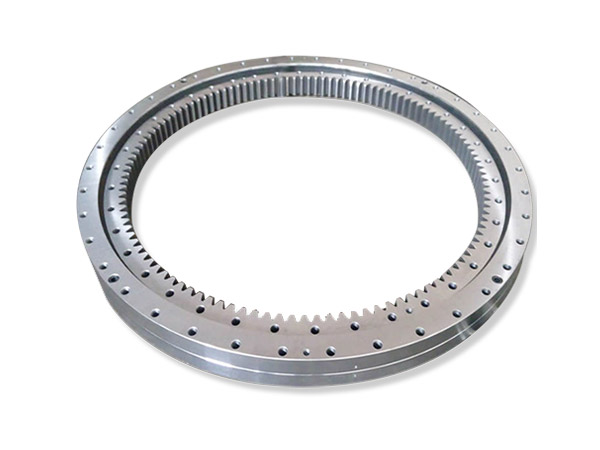What are the surface treatment processes for slewing bearing fasteners? How to choose?
We all know that slewing bearings also need fasteners. Fasteners are widely used mechanical parts for connecting and fixing mechanical equipment and various parts. They are suitable for all walks of life. Due to their standardization, series, and degree of generalization higher, we also call a type of fasteners that meet relevant standards as standard fasteners, also called standard parts. Let’s take a look at the surface treatment process and commonly used materials of slewing bearing fasteners.
Surface treatment process of slewing bearing fasteners

1. Electro-galvanized
The surface of electro-galvanized is black and military green. It is a commonly used coating for commercial fasteners. It is cheap and prone to hydrogen embrittlement during the production process. Generally, bolts above grade 10.9 are generally not galvanized. The consistency of the tightening force is poor and unstable, and it is generally not necessary to connect in important parts.
2. Oxidation and blackening
How is the blackening treatment of the slewing bearing made? Blackening + oiling is a very popular coating for industrial fasteners, and the price is cheap. However, the holding time is short, and the neutral salt spray test can only reach 3 to 5 hours in the presence of oil, and it will rust soon if there is no oil. Moreover, the consistency of torque and pre-tightening force of the oxidized black parts is poor. If it needs to be improved, grease can be applied to the inner thread during assembly and then screwed together.
3. Electroplating chrome
Electroplating chrome is relatively stable in the atmosphere, with good wear resistance, high hardness, and not easy to change color. , chrome-plated fasteners will be used only when the strength of stainless steel is not sufficient to meet the fastening needs.
4. Silver plated nickel plated
Silver plating can prevent corrosion and can lubricate fasteners at the same time. Due to the high cost, silver plating is generally only used for nuts, not bolts. Silver is easy to oxidize, so it is easy to lose its luster in the air, but it works at 1600 degrees in Chinese style, so silver-plated parts are often used in high temperature environments.
Nickel-plated fasteners have good anti-corrosion and electrical conductivity, and are often used in locations where electrical conductivity is required, such as the terminal of vehicle batteries.
5. Electroplating cadmium
Cadmium coating has good corrosion resistance, especially in marine atmospheric environment, the corrosion resistance is better than other surface treatments. The cost price is 15-20 times that of electro-galvanizing, and the cost is relatively high. Generally, it is only used in special industries such as oil drilling platforms and fasteners for HNA aircraft, which require high anti-corrosion performance.
6. Zinc
Sherardizing is a solid metallurgical thermal diffusion coating of zinc powder. Its uniformity is good, and a uniform layer can be obtained in the thread and blind hole. The thickness of the coating is 10~110μm, and the error can be controlled within 10%. Its bonding strength with the substrate and anti-corrosion performance are in the zinc coating, and it is pollution-free and harmless during processing.

How to choose slewing bearing fasteners
As the slewing bearing fasteners used in ordinary equipment, ordinary electro-galvanized and oxidized black treatment can meet the needs; if there are requirements for the hardness and wear resistance of fasteners or working temperature, silver-plated or electro-chromic processes can be selected ; If the working environment humidity is high and the anti-corrosion performance of the fasteners is required, the Dacromet, zinc galvanizing, and cadmium electroplating processes can be selected; if the conductive performance of the fasteners is required, the nickel-plated process fasteners can be selected.
The specific characteristics and advantages of the surface treatment process of the above slewing bearing fasteners have been introduced clearly. You can make a reasonable choice according to the environmental requirements of the adapted machinery and the characteristics of the equipment.


